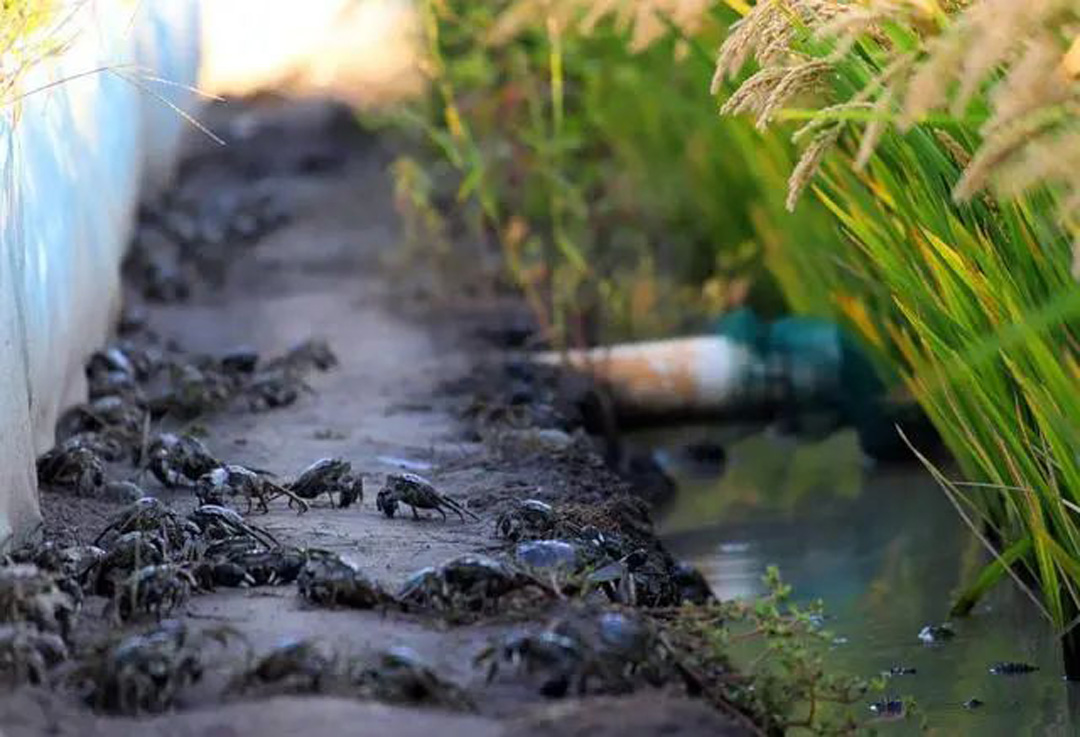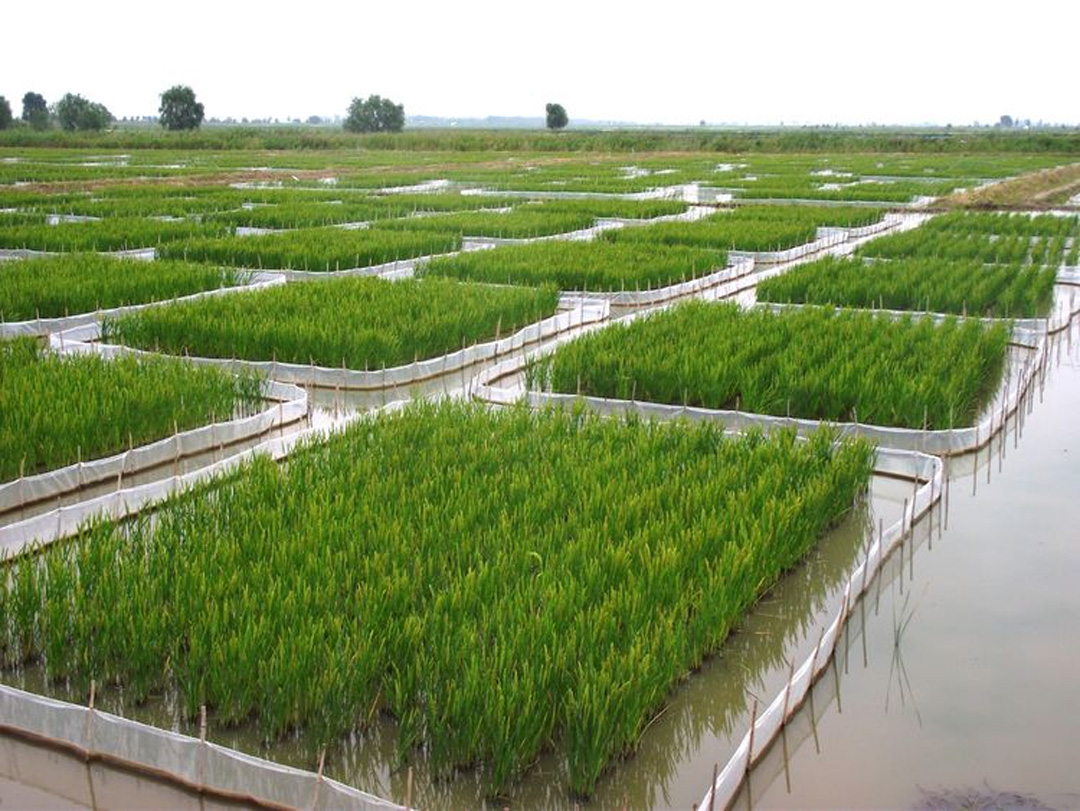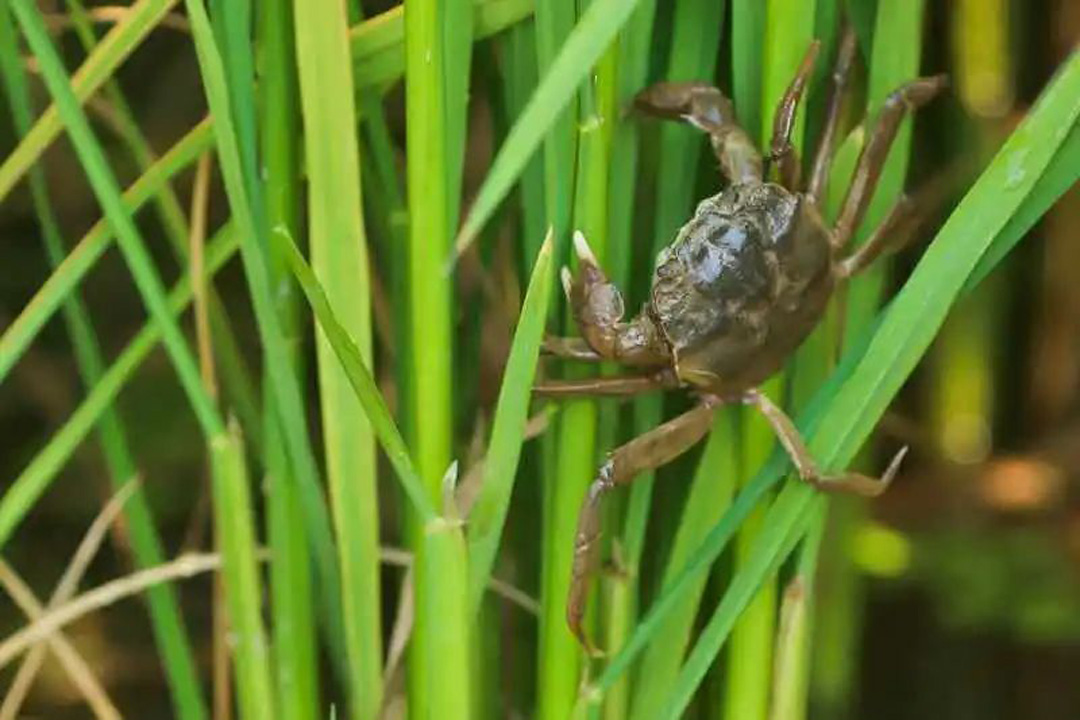Technological frontier
Effects of raising crabs in paddy fields on rice

Crab farming in paddy fields is an ecological agricultural model that comprehensively utilizes the shallow water environment of paddy fields, introduces modern agricultural technology, and applies ecological principles to realize the ecological agriculture model of one place, two crops and one water. Most of the paddy fields play an important role in increasing farmers' income and adjusting the structure of the agricultural industry. The purpose of this paper is to explain the impact of rice field crab breeding on rice, and then to strengthen farmers' confidence in rice field crab breeding, and to provide theoretical support for accelerating the promotion of this technology.
I. Effects on rice variety selection
The selection of rice varieties is crucial to whether the goal of stable and increased rice production and farmers' income can be achieved after crab breeding. First of all, the whole growth period of rice should match the growth and capture period of river crabs as much as possible, so as to make more rational use of soil, water and temperature and light resources to achieve synergy and high efficiency. Secondly, because the activity of river crabs requires deeper water layers, and the activity of river crabs has a certain influence on the growth of rice, rice varieties that are adapted to the ecology of deep water layers, have strong plants, and especially have strong lodging resistance are more suitable for raising crab rice fields. Thirdly, the growth of river crab requires a good and safe field environment, and the application amount of chemical fertilizers and pesticides needs to be strictly controlled, so rice varieties with high nitrogen efficiency and good resistance to pests and diseases are more suitable. With the improvement of people's living standards, the quality of rice has attracted more and more attention, so the quality of rice will gradually become a priority factor.

II. Impact on rice field management
The feeding of feed and the feces and crab shells produced by the metabolism of river crabs in the field provide a certain amount of organic fertilizer sources for the paddy fields. More material energy is circulated inside the field, and the soil fertility in the field is improved. Therefore, the total amount of chemical fertilizer input in crab-raising paddy fields can be appropriate. Reduce and improve fertilizer utilization, thereby optimizing the overall ecosystem of the field. Rice-crab co-cropping can reduce the growth density of weeds in paddy fields, and has a significant inhibitory effect on the total amount, fresh weight and dry weight of weeds. Studies have shown that river crabs can control more than 50% of common weeds in paddy fields, and to a certain extent It reduces the harm of weeds in the field, so herbicides can be applied less or not, and the corresponding biological control measures can be combined to achieve the purpose of green synergy and high efficiency. The reduction in the application of chemical fertilizers and pesticides not only saves production costs, but also protects the environment and meets the requirements of the healthy development of the industry.

III. Effects on rice yield and quality
Studies have shown that under the same conditions of rice cultivation density, raising crabs can increase the effective tillering of rice and increase the biological yield, and has a significant impact on the seed setting rate and grain number per ear of rice, and can increase the rice yield by about 11.5%. Some studies have also suggested that the activity of river crabs will damage the smaller tillers of rice, resulting in a decrease in the effective tillering of rice, but the number of grains per panicle, seed setting rate and thousand-grain weight of rice will increase to varying degrees, especially in the organic rice crab model. Metabolites improve soil fertility, meet nutrient requirements and material transport during rice grain filling, and promote the increase of rice yield per plant. Overall, most studies believe that rice-crab co-cropping has positive effects on the number of grains per ear, seed setting rate and 1000-grain weight to varying degrees, and thus will not have a negative impact on rice yield. This ensures that the production of rice will not decrease or even increase after raising crabs.

Compared with the conventional paddy field, raising crabs had a negative effect on the milling quality of rice, the brown rice rate and the milled rice rate were both decreased, but the whole and milled rice rate was significantly improved. Compared with the conventional paddy field, the chalky grain rate and chalkiness degree were reduced to different degrees, which was directly related to the change of nitrogen in the paddy field. The co-cropping of rice and crab reduces the amylose content of rice, improves the gel consistency, and greatly improves the cooking quality of rice.
To sum up, the impact of crab raising on rice is more positive than negative, and with the improvement of people's requirements for environmental quality and diet quality, the positive effect will become more and more obvious. Therefore, crab breeding in paddy fields is a promising undertaking worthy of vigorous promotion.
R&D Center: Zheng Yan

Guanghe crab rice home
WeChat | ghxiedaojia
This is a public account with a soul